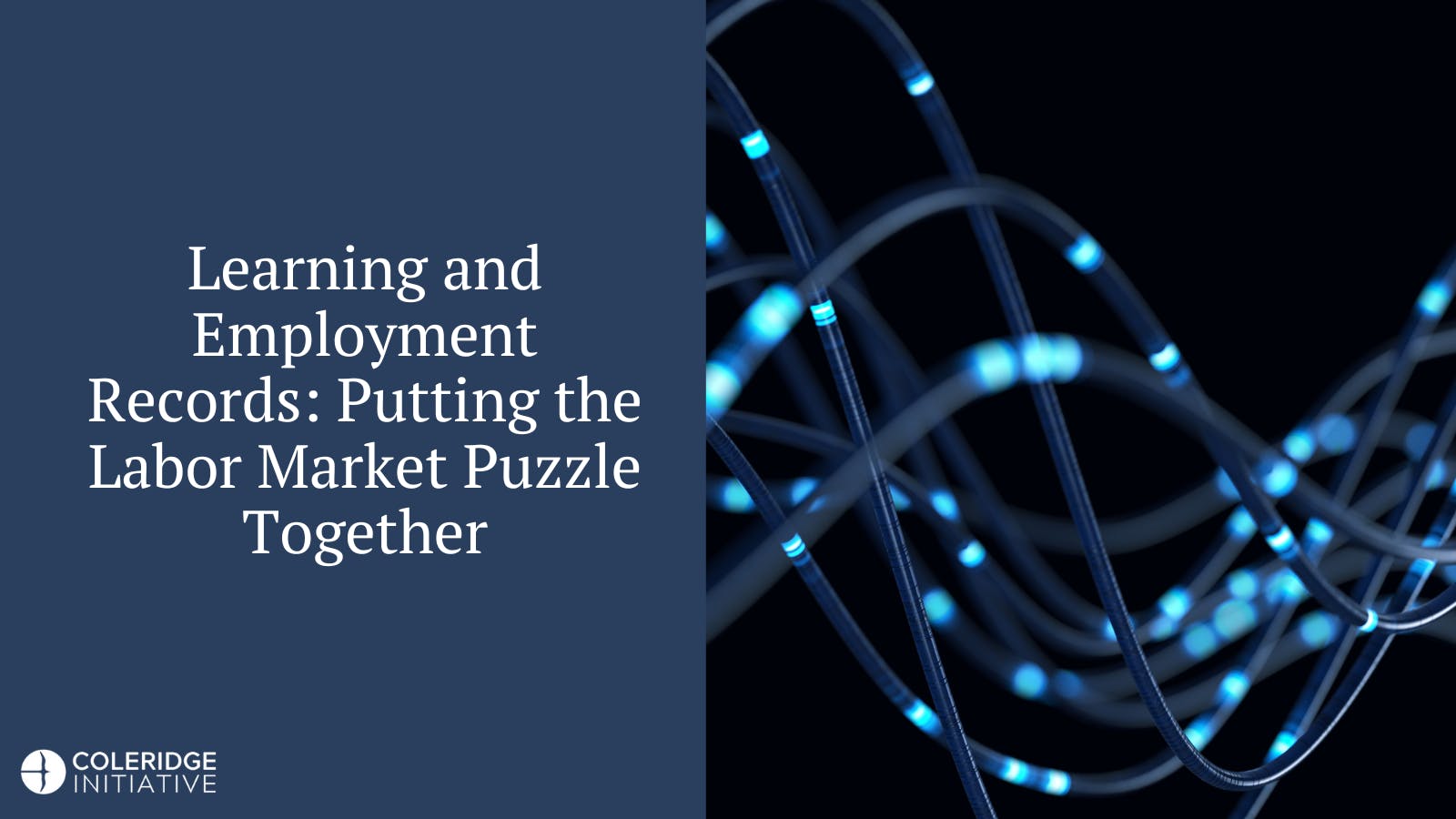
13 Mar 2024
Learning and Employment Records: Putting the Labor Market Puzzle Together
Imagine the labor market as a vast, dynamic puzzle where each piece represents an individual worker, each with unique skills and experiences suitable for various industries and roles. The puzzle board represents the economy, with various sections depicting different industries and sectors. The goal is to fit each piece into the right place, ensuring a perfect match that contributes to the complete picture of a thriving, efficient economy. However, three main challenges make this task difficult: structural unemployment, frictional unemployment, and asymmetric information. Learning and Employment Records (LERs) act as a powerful tool to address these challenges, helping to piece together the labor market puzzle more effectively.
Frictional unemployment is like having all the right pieces but struggling to place them quickly because workers are transitioning between jobs or locations, and it's not immediately clear where they fit best. LERs can act as a guide, providing a clear overview of each piece's shape and color. They help both workers and employers see where each piece fits best, reducing the time and uncertainty involved in finding the right spot. By enhancing job matching and providing up-to-date information on available positions and worker skills, LERs reduce the time each piece spends in limbo, helping to assemble the puzzle more efficiently.
Structural unemployment is like missing pieces from a new puzzle and trying to fit pieces from an old puzzle into it. Because the economy has evolved, skills are now outdated and do not match the needs of the current economy. LERs can act as a transformative tool that reshapes these pieces. They identify the gaps between the worker's current skills and the market's needs, guiding targeted reskilling or upskilling programs. As individuals acquire new skills, their puzzle piece is reshaped, allowing them to fit into the evolving economy. LERs can help ensure that no piece is left behind, and everyone has the opportunity to adapt and find their place in the new picture.
Asymmetric information is like trying to complete a puzzle in the dark, where employers and workers cannot fully see or understand each other's pieces. This lack of visibility leads to mismatches and inefficiencies. LERs can illuminate the space, revealing the detailed features of each puzzle piece. They provide comprehensive and verified information about workers' skills, experiences, and qualifications, while also giving workers insights into the specific needs and expectations of employers. This enhanced transparency ensures that each piece is placed with a clear understanding of how it fits into the broader picture, reducing mismatches and enhancing overall efficiency.
In the complex puzzle of the labor market, LERs can serve as an essential tool, helping to reshape, guide, and illuminate the pieces so that they fit together more seamlessly. By addressing the challenges of structural unemployment, frictional unemployment, and asymmetric information, LERs contribute to a more efficient and complete picture, where every worker finds their place and every employer benefits from the right talent. As the puzzle continues to evolve with the economy, LERs can ensure that the labor market can adapt and thrive, no matter how the picture changes.
While a potentially useful analogy, the development and use of a strong LER ecosystem as a solution to the complex puzzle of the labor market is not without challenges. The preceding section takes LERs in their best light and assumes away many potential barriers to their success. Many in this space are leading the way from theory to practice and navigating these challenges. As we continue to move forward, one key opportunity is how to best leverage a robust data system to support an LER ecosystem. We discuss this in more detail in our recent white paper “Bridging Gaps in the Labor Market: The Role of Learning and Employment Records and the Data Infrastructure Needed to Support Them”.
Read the White Paper: Bridging Gaps in the Labor Market: The Role of Learning and Employment Records and the Data Infrastructure Needed to Support Them.